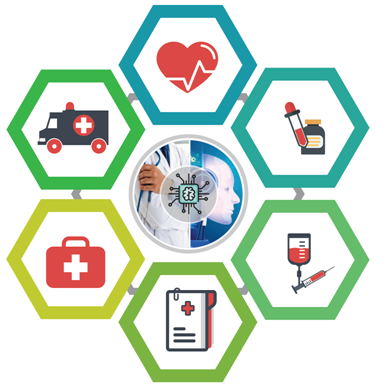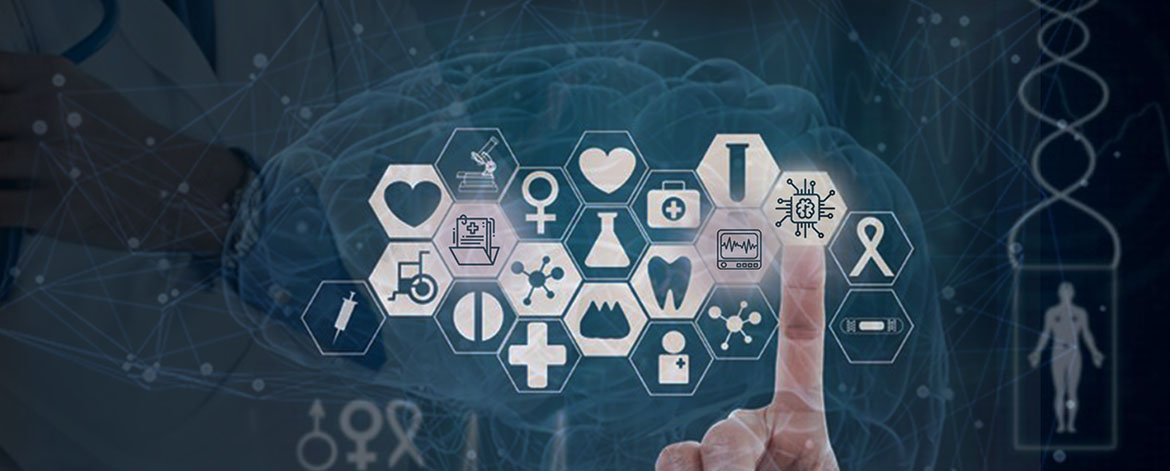Artificial Intelligence (AI) and Machine learning (ML) is accelerating the pace of scientific discovery across fields, and medicine is no exception. As per Allied Market Research, Artificial Intelligence in the healthcare market was valued at $4,836.87million in 2019 and is projected to reach $99,491.58 million by 2027, registering a CAGR of 42.8% from 2020 to 2027. It is becoming a top revenue earner for many of the countries across the globe. From language processing tools that accelerate research, to predictive algorithms that alert medical staff of an impending heart attack, to smart health records, machine learning complements human insights and practices across medical disciplines.
Recently, great minds from across the globe in the medical domain have responded pro-actively to the challenge posed by the COVID-19 pandemic. A plethora of innovations has already surfaced which signifies the potential of AI/ML in this sector. Healthcare being a complex vertical, the power of the new age technologies namely Artificial Intelligence, Computer Vision and Machine Learning Systems reduces the complexity of the same enabling better decision making.
Using AI, healthcare providers can analyze and make accurate predictions with the available patient data for early diagnosis and better treatment which otherwise would actually take a significant amount of time and yet won’t be as accurate. Today, it is possible to determine whether a person can get cancer just from a photograph using machine learning and computer vision to detect increased bilirubin levels in a person’s sclera, the white part of the eye. This can be possible by training machine-learned models based on a historical dataset captured from the previous willing patients.
Disease diagnosis using Convolutional Neural Networks (CNNs)
- In the context of deep learning, a convolutional neural network (CNN) is a type of neural network, most commonly applied for analyzing visual imagery
- Several machine learning models are already being used for skin cancer detection using popular libraries like Tensor Flow, scikit-learn, Keras and other open-source tools. It’s reported that dermatologists have 65% to 85% (reference: Systematic Review (nih.gov)) accuracy in detecting skin cancer. Such models are trained using images of thousands of other malignant and benign skin lesions
- Apart from cancer detection CNNs are also being used to develop tools for diagnosing heart disease, tuberculosis, Alzheimer and other fatal illnesses
Smart virtual assistant based diagnosis and assistance
- With the new dawn of the digital age, the majority of the human race has access to smart virtual assistants via smart-phones, smart-speakers and many other ways. These smart virtual assistants with the power of AI-assisted natural language processing and generation, a technique to analyze and synthesize natural language and speech, can be almost as helpful as an in-human counselling session
- If need be, these smart assistants are already capable enough to help a patient schedule a consultation appointment with an actual healthcare expert instantaneously that too all by itself
- Such level of personal assistance can help people to live a much healthier life without any assistance of a human caretaker

AI assisted health monitoring devices
- With the increase in the use of fitness trackers and other health monitoring devices, it has become much easier to keep the vitals in check 24/7. The vitals monitored in such a way can prove to be of great help in detecting anomalies in the functioning of the body
- Anomaly detection via machine learning can be extensively used to automate the health monitoring of the equipment by detecting anomalies in various vitals like an abnormality in heart rate, temperature, blood-oxygen levels etc. with the help of smart sensor devices
- The captured vitals recorded from such wearable devices can be analysed via machine learning classifier models and it can suggest the required exercises, medication, activities, and even habits, which can, in turn, help the user live a much healthier life
Smart health records
- Imagine one is in immense pain but isn’t able to express the complete medical history verbally and that’s where AI assisted chat-bot that already knows everything about you on the basis of your “Smart Health Record”, how convenient would it be, right? Such prior available data can help in life critical situations
- Machine learning in healthcare can be very proficient to ease the processes while saving time, effort, and money. Document classification techniques using vector machines and ML-based OCR recognition such as Google’s Cloud Vision API are already proving to be of use in preparing a much helpful digital health records compared to the generic paper-based records
Thus, AI/ML with latest technologies, such as audio and visual data processing helps healthcare firms to adapt models addressing a variety of challenges. At VOLANSYS, our Machine Learning experts can custom-build applications that meet healthcare requirements and improves patient care, and ultimately differentiate an organization from its competitors. We also ensure any cloud connected healthcare solution designed is compliant to HIPAA standards ensuring health data security.
Read our success stories to know how VOLANSYS designs healthcare solutions enhancing patient care and data privacy.

About the Author: Kandarp Rastey
Kandarp is associated with VOLANSYS past 3 years into embedded domain. He has made his contributions in product development services on different Linux based products, in C, C++, Shell Scripts, and Python. He has an in-depth know-how of wireless protocols as well as IoT automation domain. He is an agile tech enthusiast certified by Google Cloud and Stanford Online who is keenly interested and working on developing ML and AI concepts









